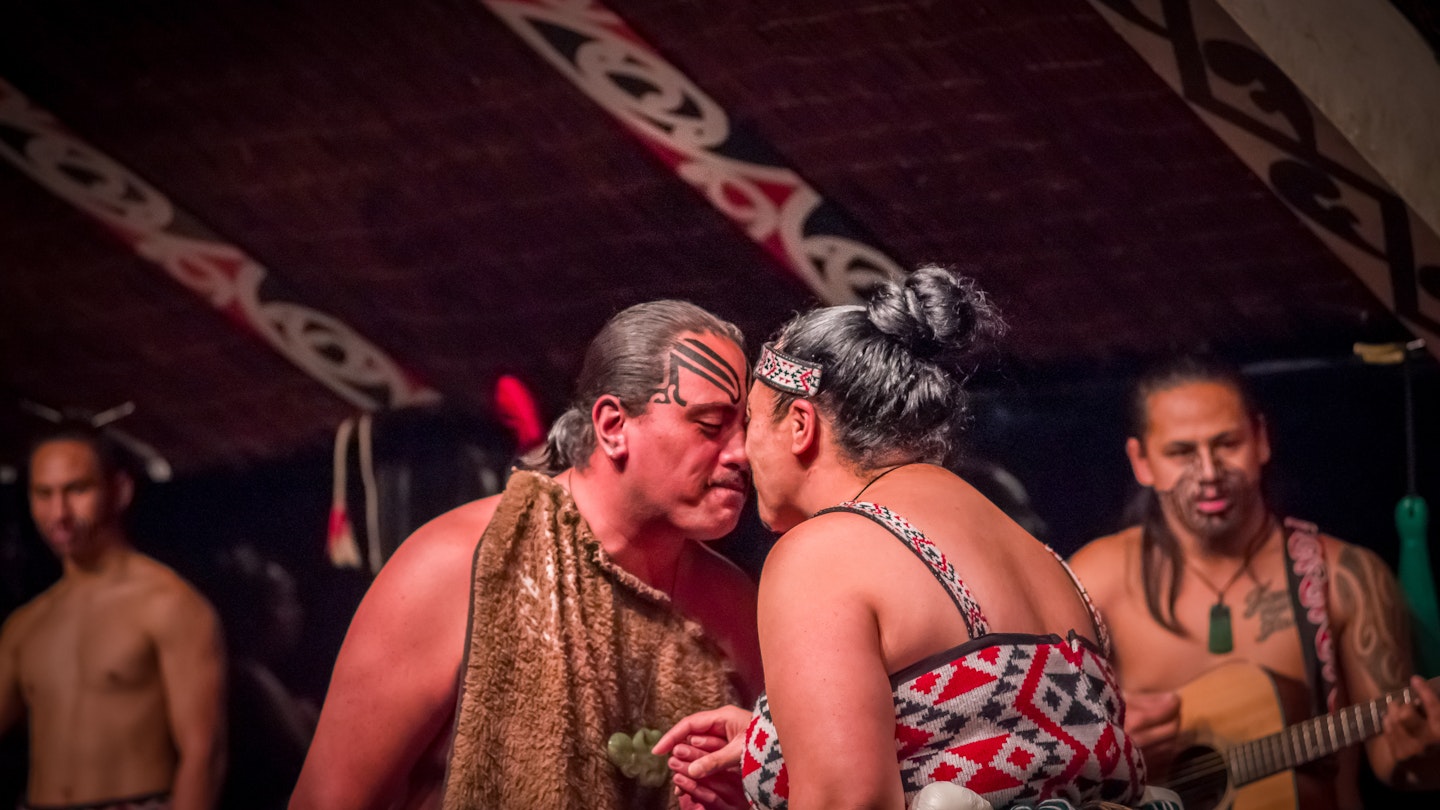Once outlawed by pākehā (non-Māori) New Zealanders, te reo Māori is today one of Aotearoa New Zealand’s three official languages (along with English and New Zealand Sign Language). Travellers to New Zealand will notice it is used everywhere: on radio and television shows, in newspapers, on Auckland buses… that’s just for starters. Even New Zealand’s Prime Minister Jacinda Arden is bringing her daughter up bilingual. Here’s how you can learn more about te reo Māori before a visit to NZ.
The importance of te reo Māori
The indigenous language of New Zealand, te reo Māori has lent new words and concepts to everyday English, blending into a uniquely Kiwi vernacular. Beyond kia ora (hello), popular words pepper conversations like aroha (love), kai (food), mana (the spiritual quality of a person or object) and whakapapa (your genealogy; where you come from).
More significantly, Māori concepts that have taken root in the national consciousness are also partly responsible for New Zealand’s reputation as one of the most beautiful and friendly places in the world to live, or visit. Kaitiakitanga (guardianship or protection) will mean its natural environment is looked after now for future generations; manaakitanga (hospitality) sees New Zealanders being exceptionally friendly to visitors, as long as they do the right thing; and anyone can become whānau (extended family). For non-Māori people, whānau is akin to ‘my people’ – beyond your family, those friends with whom you have kinship and shared values, but also reciprocal responsibilities.

Get to know te reo Māori
Te reo Māori is a melodic language, with Polynesian roots. People from Southeast Asia say the vowel and consonant sounds are familiar: if you’ve spent any time on Indonesian language learning you could be ahead of the game. Romance language speakers also have little trouble pronouncing new Māori words, especially those with Italian, Portuguese or Spanish language skills (roll those Rs!).
Other visitors have suggested it sounds a bit like a mash-up of Finnish and Japanese, so if you’ve had a dabble in either of these, you may be in for a pleasant surprise when it comes to trying to use some Māori. Keen to learn more? There are multiple ways you can learn te reo Māori, through apps, online, or by taking a course in New Zealand.

You can learn te reo Māori
If you want to learn Māori nouns for everyday objects download the app Kupu, which works a bit like Shazam but for things rather than songs. Online, Māori Dictionary has a handy translator if you want to look up a new Māori word – you’ll find them everywhere in New Zealand from menus to newspapers. Look up You Tuber Mari Johnson, who has published a handy video on that all-important pronunciation.
Language-learning app Drops, got on board first, but Duolingo just announced it will add Māori to its offering so you can start practicing before you even venture to New Zealand. Additionally, full qualification courses are available for international students at Auckland University if you’re planning to spend a long time (minimum 40 weeks) in New Zealand. If you are recognized as a permanent resident, there is also the option to enroll in a year-long language learning course for free!

Understanding Māori place names
On the ground, you’ll see New Zealand has a mix of English and Māori place names, though there is ongoing discussion of returning the colonial names to their originals. Tūranganui-ā-kiwa sounds much better than Poverty Bay (a region on the east coast of the North Island named by Captain Cook). Efforts have been made – and are ongoing – to correct signage to include macrons (the horizontal line above a vowel) to indicate the correct vowel sounds.
Getting pronunciations right has not always been a concern for New Zealand’s pākehā population, and admittedly some still find it a little disconcerting to realize they’ve been calling their town by the wrong name their whole lives… There are pockets of resistance to change, and it is valuable to understand that there’s a certain level of shame (and pride) that many people need to overcome to embrace a more bi-cultural Kiwi future. Taupō, for example, sounds like ‘toe-paw’, not ‘towel-poh’ – but you’ll no doubt hear multiple pronunciations when you’re on the ground (which can sometimes lead to some confusing conversations).

Understanding a few key Māori terms will also shed some poetic light on New Zealand place names: Waikaremoana is the Sea (moana) of Rippling (kare) Waters (wai); Rotorua means the Second (rua) Lake (roto). Other top descriptions to learn are awa (river), mangō (shark), maunga (mountain), and nui (big). And of course Aotearoa, the Māori name for NZ, is most often translated as ‘Land of the Long White Cloud’.
The story of te reo Māori’s survival was only possible through the tenacity of New Zealand’s indigenous people. The result is the opportunity now to connect with a culture rich in music, song, dance, and storytelling – not to mention a wicked sense of humour – that makes NZ all the more fascinating as a travel destination. For a week in September each year, the whole country puts in an extra effort to use more language during Māori Language Week. This is how you revive a language that was once at risk of disappearing.





